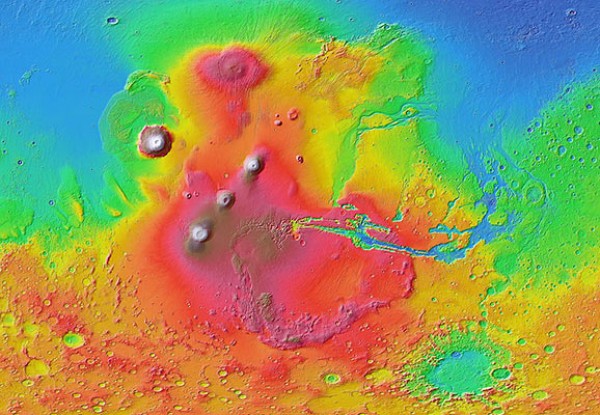.

NASA/JPL-Caltech/Arizona State University
One of Mars’s most prominent features is a volcanic province known as the Tharsis bulge, a near-circular, 2000-kilometer-wide hump (center, depicted in shades of red and brown) near the planet’s equator that is 10 km high in places. Volcanism there is likely fueled by a plume of hot material welling up from deep within the planet. Problem is, computer simulations and lab studies suggest that such a plume wouldn’t develop where the bulge is now—that is, along the relatively sharp boundary between Mars’s thinner crust of the northern hemisphere and the much thicker crust beneath the southern highlands. Using measurements of the planet’s gravitational field and elevations (ranging from low [blue] to high [white]) taken from orbit, researchers have identified a swath of thicker-than-normal crust that may mark the slow but steady migration of the volcano-fueling hot spot from the planet’s south pole (bottom), they will report in a forthcoming Journal of Geophysical Research: Planets. Previous studies have noted a lower-than-normal number of craters along that swath—a hint that volcanism may have smothered ancient pockmarks in that region—but the new findings bolster the notion that the hot spot migrated from where studies suggest it should have formed in the first place. Interestingly, the team notes, the overall pattern of terrain in that region of Mars is similar to that in the western United States, where the higher-than-normal topography of Idaho’s Snake River betrays the presumed path of the hot spot that drove past volcanism, as well as current geothermal activity, in and around Yellowstone National Park.
Quelle: AAAS
